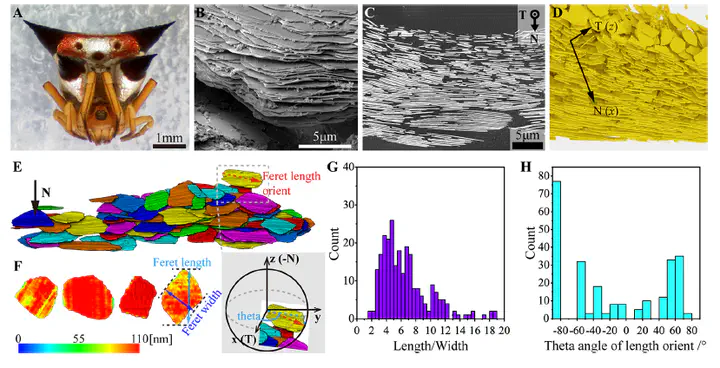Assembly of Guanine Crystals as a Low-Polarizing Broadband Multilayer Reflector in a Spider,Phoroncidia rubroargentea

Abstract
The diminishing of the polarization effect is important in the applications of dielectric multilayer reflectors in many optical systems, such as low-loss broadband waveguides, optical fibers, and LEDs. Low-polarizing broadband reflections were identified from birefringent-guanine-crystal-based multilayer reflectors in the skins of some fish. Previous models for these intriguing natural optical phenomena suggested the combined action of two populations of guanine crystals with an orthogonal low-refractive-index optic axis. Here we report a novel realization of polarization-insensitive broadband reflectivity in a spider, Phoroncidia rubroargentea, based solely on the type of guanine crystals with the low-refractive-index optic axis normal to the crystal plates. We examined the three-dimensional structure of the guanine assembly in the spider and performed finite-difference time-domain (FDTD) optical modeling of the guanine-based multilayer reflector. Comparative modeling studies reveal that the biological selection of the guanine crystal type and specific spatial arrangement work synergistically to optimize the polarization-insensitive broadband reflection. This study demonstrates the importance of both crystallographic characteristics and 3D arrangement of guanine crystals in understanding relevant natural optical effects and also provides new insights into similar broadband, low-polarizing reflections in biological optical systems. Learning from relevant biofunctional assembly of guanine crystals could promote the bioinspired design of nonpolarizing dielectric multilayer reflectors.